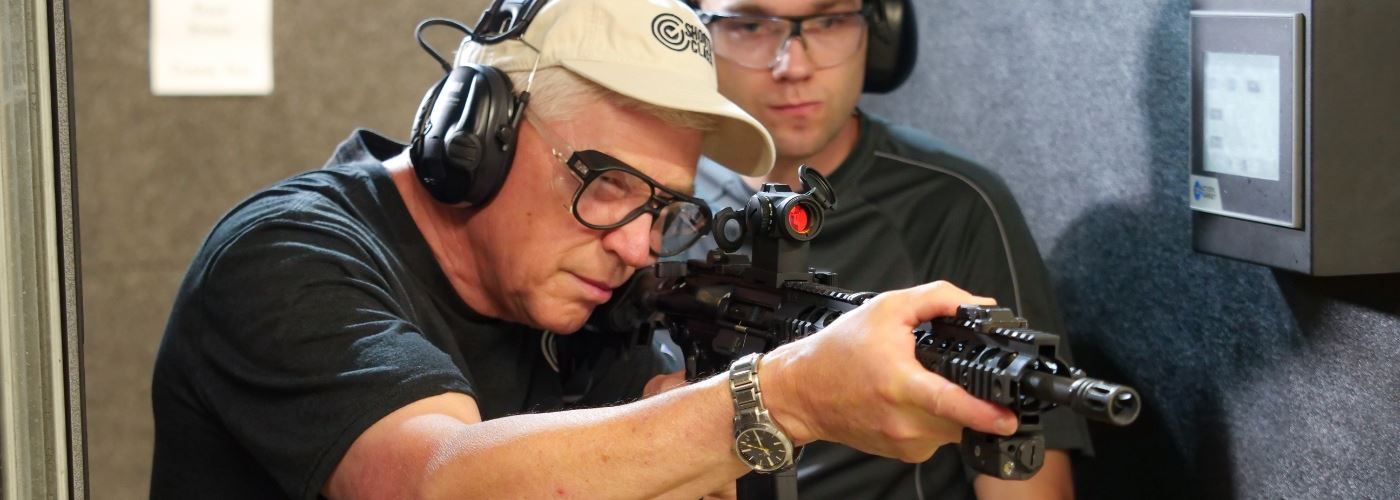
A shooting range is a great place to gain expertise and confidence with your firearm while improving your marksmanship. But there is such a thing as gun range etiquette. Do you know the dos and don’ts for a safe and enjoyable experience at the shooting range?
The Importance of Gun Range Safety Rules
Most firearms owners visit a gun range at some point. While some gun owners visit a shooting range weekly, others may go as infrequently as once a year.
Regardless of how often you visit a shooting range, you need to keep gun range etiquette top of mind. Gun range safety is so important—not only for yourself but also for those around you.
Handling a gun should never be taken lightly. Even experienced gun owners can get too comfortable. Forgetting to strictly follow all safety procedures can have deadly consequences.
Let’s start with the “dos” related to gun range safety.
Do: Know gun range safety rules.
Each range has its own set of rules. Know them.
To start, here are a few questions to ask the range operators.
- What are their safety rules? You should never enter a shooting range without an awareness of their specific set of rules.
- What type of firearms are allowed on this range?
- Is drawing from the holster allowed? If so, what type of gun holster is allowed on this range?
- Is rapid fire shooting allowed?
- What type of ammunition is allowed? This sounds simple, but there are definite limitations at some ranges, such as no armor-piercing ammunition, tracer rounds or potentially flammable ammunition.
- What type of shooting targets are allowed?
Outdoor ranges may have more flexibility in their range rules, but it is always good to adhere to the gun range safety rules above.
- Know if the outdoor range is a “hot” or “cold” range.
- Hot ranges allow firearms to be loaded when not shooting. Firearms must remain holstered until ready to shoot at your target (no exceptions).
- Cold ranges require the firearm to be unloaded until your turn to shoot and given a command to load and make ready.
- Outdoor ranges will generally have a “Safe Table” in a safe location where firearms can be handled.
- Outdoor ranges where shooting at multiple targets is allowed will generally have a “180 rule,” where muzzle can break to a 90 degree right / 90 degree left line.
Do: Put safety precautions first.
You are responsible for your own firearm, your behavior and knowing standard gun safety rules.
- Know the condition of your firearm before you start to shoot and after you’re finished. Is it loaded or unloaded? Never, ever assume.
- When you arrive at an indoor shooting range, proceed to your lane and place your firearm on the tray with the muzzle pointed down range. (Your firearm stays there until you’re finished and either re-holster or put it in your range bag).
- Your firearm must be pointed down range at all times (loading, unloading, dealing with malfunctions, etc.)
- If you have a malfunction you’re not sure how to fix, lay the firearm down (pointed down range) and ask a Range Safety Officer (RSO) for help.
- If you have a malfunction you do know how to fix, fix it with the firearm pointed down range.
- Keep your finger outside the trigger guard and on the slide until your firearm is on target. When finished, place your finger back on the slide with muzzle pointed down range.
- Know your target and beyond. (Even at a range? Yes, the firearms range is where you practice mindset and conditioning.)
- Clean up after shooting. When finished, pick up or sweep up your brass, targets, etc. Leave the range cleaner than when you arrived.
Do: Wear proper safety gear.
Having the proper safety gear for the shooting range is important to protect your hearing, your eyesight and more.
- Eye protection should be safety rated and wrap-around style.
- Hearing protection can be foam ear plugs or quality electronic gear. Investing in electronic gear is highly recommended to provide maximum protection, especially at indoor ranges where the person next to you may be shooting an AR-15 rifle.
Do: Understand the cease fire command.
The cease fire command is more likely on an outdoor shooting range but could happen at any range.
Cease fire means just that: stop firing. Lay your firearm down in a safe condition.
Do: Never point a gun at anything you’re not willing to shoot.
Of all the rules of safe gun handling, this is one of the most important, both on the range and off. Never point a firearm at anything you are not intending or willing to shoot.
Too often, people will turn, gun in hand, to talk to someone or show them something. This can cost a life. It’s very easy to do without thinking – even for experienced gun owners.
Now for the don’ts of a shooting range.
Don’t handle your firearm behind the firing line.
Your firearm belongs at the firing line on the stall tray (indoor ranges).
Don’t engage in horseplay with friends.
The range is where you must be serious. This is not a time for goofing off or joking with friends.
Don’t visit a shooting range if you’ve been drinking (even just one drink) or using drugs. This endangers your life and the lives of others.
Don’t ever go in front of the firing line.
Sometimes targets fall. Leave them and ask the RSO to retrieve them for you if necessary. The RSO will call a cease fire and ensure the range is safe.
Don’t leave the stall (indoor range) with a firearm.
Remove the firearm from your range bag in the stall and replace it in your range bag in the stall before you leave.
Find Firearms Training Near You
Make sure you always apply these important steps toward good gun range etiquette. You can also brush up on NRA safety rules.
Training is the best way to keep your gun skills sharp and that includes the ones related to safety. To find firearms instruction, at any level, use ShootingClasses.com's easy search function to find firearms classes near you.
